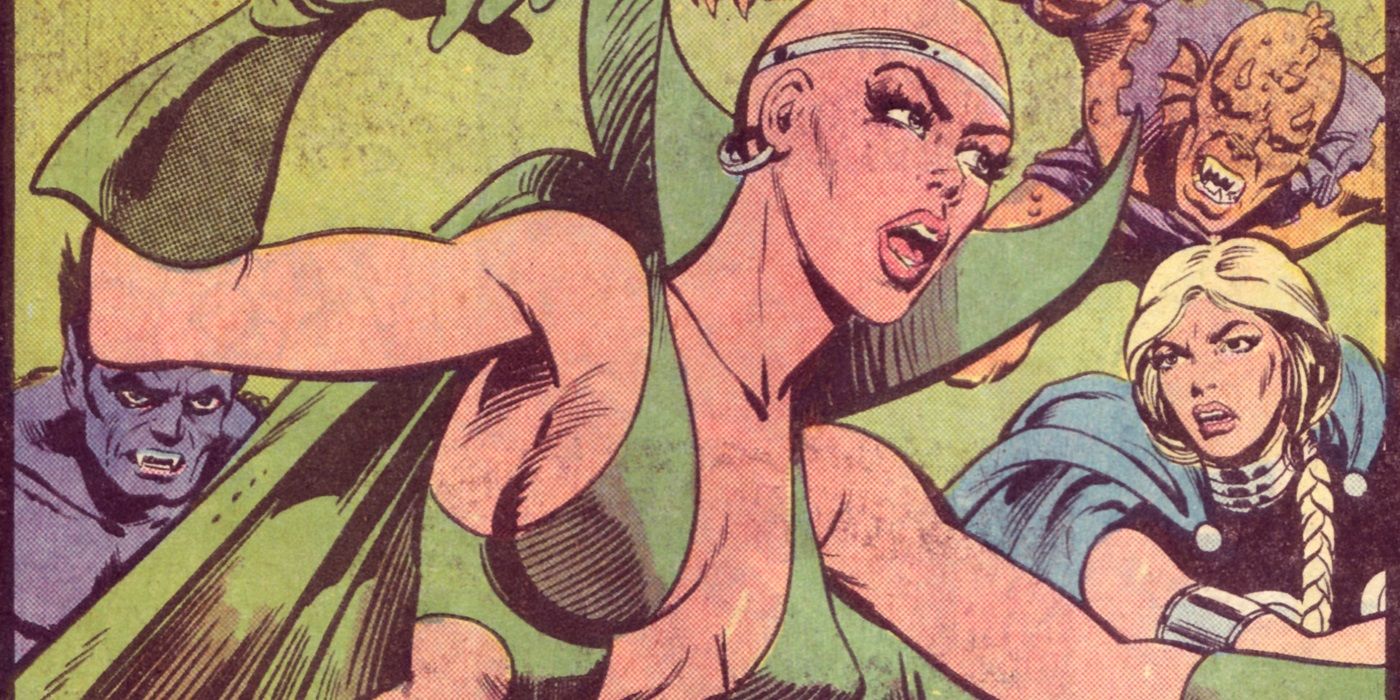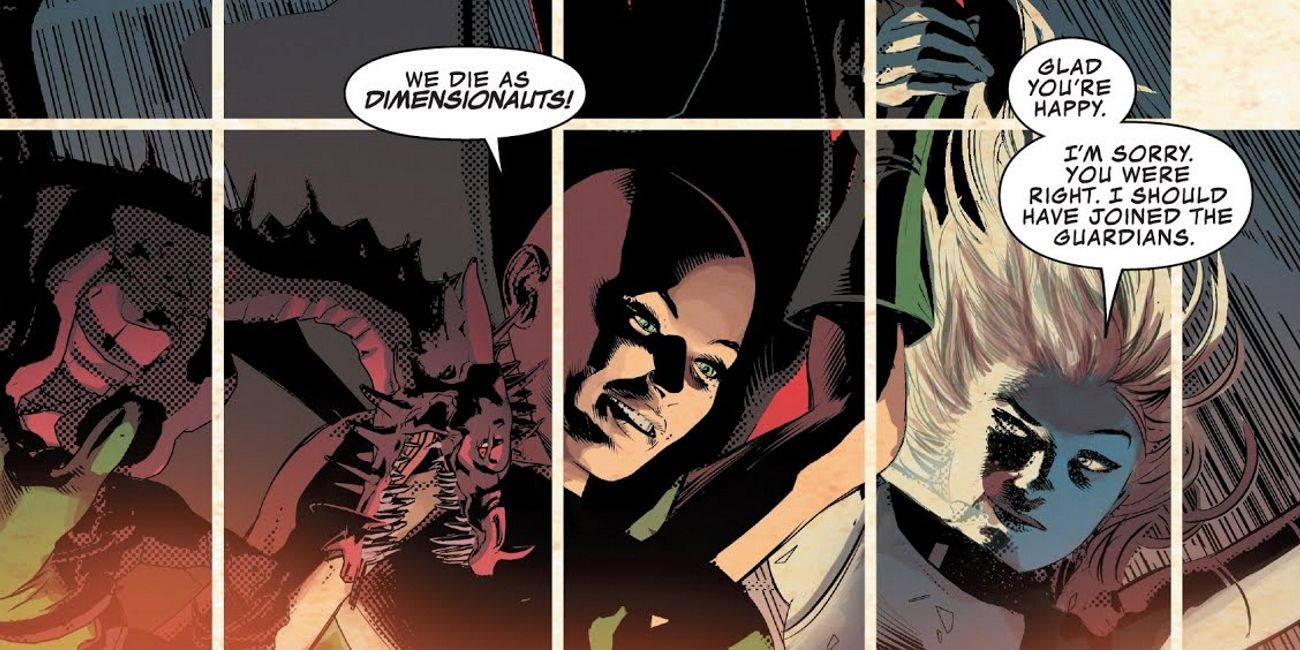While the MCU has done a great job introducing general movie audiences to second string superheroes, many of these characters have extremely complicated history spanning decades. Some of it isn't pretty or even remotely easy to understand. One of these characters is Moondragon, whose convoluted history just took a turn for the weird in Guardians of the Galaxy #5 by Al Ewing and Juann Cabal.
Moondragon is the daughter of Drax the Destroyer, who was originally a real estate agent from Earth named Arthur Douglas (yes, really). True to his MCU origins, his family was killed when he was attacked by Thanos. With the aid of Thanos' father and grandfather Mentor and Kronos, Arthur was revived as Drax the Destroyer, while his daughter Heather was raised by Mentor. Trained to be both a formidable martial artist and psychic, Heather would adopt the identity as Moondragon after triumphing over the ferocious entity the Dragon of the Moon.
From there, she starts a winding path, appearing as both a reluctant ally to the heroes of Earth as well as an occasional villain. During the events of Annihilation, she starts a relationship with Phyla-Vell, known previously as Captain Marvel, and eventually joins the Guardians of the Galaxy. However, an alternate reality Moondragon - more heroic than her 616 counterpart - has since taken up residence with the increasing fractured team.
Guardians of the Galaxy #5 finds two sets of Guardians clashing, with one team, lead by the recovering Nova, trying to stop Rocket's nemesis Blackjack O'Hare from activating a Galactus-shaped power plant, while rival Guardians - lead by Gamora - has been hired to protect O'Hare property. In the midst of all of this, however, the two Moondragons are locked in a battle for survival.
The enraged OG Moondragon - calling herself the Dragon of the Moon - unleashes a psychic attack that leaves her alternate reality counterpart bleeding from the eyes. But the new Moondragon quickly turns the table and handily beats the original before she draws her closer and, enveloped in psychic energy, they . . . kiss? The final page shows Phlya-Vell, who has been trying to communicate with Moondragon the entire time, being answered by a new Moondragon, who appears to be the merged consciousness of both versions of the character amid a truce between both teams.
The rest of the issue highlights the efforts of both Guardians. Blackjack's efforts to assassinate his old enemy Rocket Racoon are quickly undone by Groot, who doesn't take kindly to attempts made on the life of his best friend. Hercules, historically depicted as a buffoonish foil to Thor, shows really character development as he talks down Gamora and completely outmaneuvers the over-confident Prince of Power into the reactor, destroying the power plant as the Guardians escape.
The issue itself does feel a bit disjointed, split between the Moondragons' ongoing war with one another while Rocket Raccoon's plan comes together almost without a hitch. Still, this fractured approach is not without its merit, as the two Moondragons' trippy conflict comes to a literal head before the two reach a peace in the weirdest way possible. The development opens the door for an interesting reconciliation between both teams, who are equally dependent on their two psychic members, who are now sharing both a body and a consciousness. Still, it's doubtful the Guardians of the Galaxy will have it easy. Can Gamora and Rocket come to a peace after the death of Star-Lord? And how will Phyla-Vell deal with her lover's new combined personality? With the next issue focusing on the oft-sidelined Nova, the answers should be interesting to say the least.


